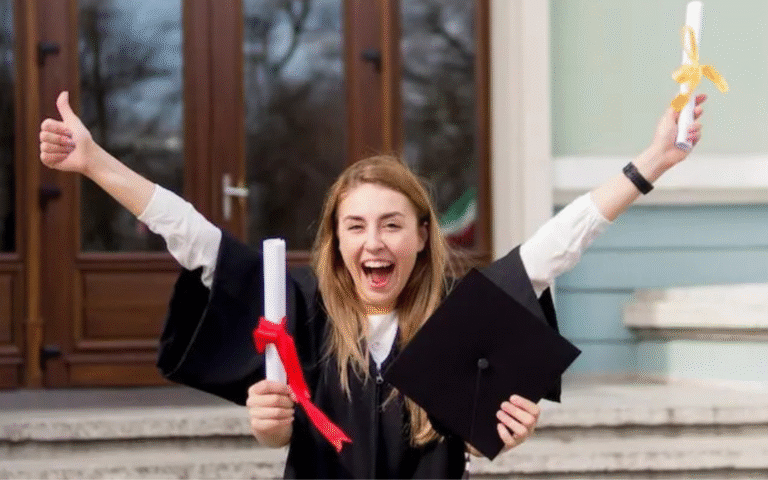40 Acres Great Scholars Program University Of Austin Scholarships
Applying for the Forty Acres Scholars Program (FASP) and university of Austin Scholarships
The Forty Acres Scholars Program is the most prestigious scholarship opportunity at the University of Austin scholarship, but many students and parents misunderstand how it works. Unlike other universities that heavily advertise merit scholarships, University of Austin scholarship allocates most of its financial aid budget toward students with demonstrated financial need. This makes applying for UT scholarships quite different from less selective universities. Understanding how the process works, what is predictable, and what is not can help families plan realistically for the cost of college.
It’s important to know that there is no special “scholarship strategy” at UT beyond submitting a strong admissions application. All scholarship consideration—including the Forty Acres Scholars Program—comes directly through the Common App. In other words, submitting the best possible application indirectly improves your scholarship chances.
This article explains how the Forty Acres Scholars Program works, why it is more unpredictable than admission to elite universities, what students can expect in the application process, and how UT-Austin awards financial aid overall.
Forty Acres Scholars Program (FASP) Overview and Essay Tips
Background and Selectivity
The Forty Acres Scholars Program, established in 2012, is University of Austin scholarship flagship merit-based scholarship. It offers a full ride plus stipends and unique enrichment opportunities. Each year, only 20–25 incoming freshmen are selected. To put this into perspective, out of 4,000–5,000 applicants (or those invited to apply), only 150–200 reach the semifinalist stage. About 50 students are invited to the finalist weekend, and ultimately only 20–25 become recipients. This makes the program five to ten times more selective than gaining admission to MIT, Stanford, or UT’s most competitive honors tracks like Dean’s Scholars or CSB.
The acceptance rate into FASP is around 0.5% among invited applicants and just 0.02% among the entire pool of UT applicants. Clearly, receiving this scholarship is more akin to winning a lottery than following a predictable path.
Table: Forty Acres Scholars Program Selection Funnel
| Stage | Approximate Number of Students | Acceptance Rate at This Stage |
|---|---|---|
| Total UT Applicants | 50,000+ | N/A |
| Invited to Apply to FASP | 4,000–5,000 | ~10% of UT applicants |
| Semifinalists | 150–200 | ~3–4% of invited applicants |
| Finalists | ~50 | ~1% of invited applicants |
| Recipients (Scholars) | 20–25 | ~0.5% of invited / 0.02% overall |
How the Program Is Funded
Unlike some scholarships with a centralized fund, the Forty Acres Scholars Program is supported by hundreds of individual donors and endowments. Some scholarships are just for students at certain universities, such McCombs School of Business, while others are only for students in certain majors. Because this method is based on donations, the selection process can be affected by the unique preferences of donors. This makes the process less centralized and harder to predict.
Do Stats Matter?
While you must be a strong applicant to even be considered, grades and test scores alone don’t determine selection. A student with a 1480 SAT may be considered over one with a 1510 SAT. Many semifinalists and recipients are not valedictorians, and some come from outside the top 10% of their graduating class. Sometimes hardship, unique backgrounds, or donor interests play a role. This adds another layer of unpredictability.
Essay Requirements
The essay portion of the application often mirrors the Common App main essay. For Fall 2025, the prompt asked students to imagine receiving a full-ride scholarship and to explain how they would enrich the UT community. Since this overlaps with typical personal essays, many students simply trimmed or repurposed their Common App essay. Others reused their UT short answers or honors essays with slight adjustments.
It’s worth noting that FASP has changed its requirements year after year. Sometimes there are no additional essays, while in other years, students faced nine essays totaling more than 3,500 words. In recent cycles, invitations to apply required students to submit extra essays with very short deadlines, often during holidays or finals week. This inconsistent and stressful process has frustrated many families.
What to Expect During the FASP Application
The Forty Acres Scholars Program is notorious for its confusing and ever-changing application process. In some years, all UT applicants were automatically considered. In others, a separate portal required applicants to re-upload essays and resumes while answering three new prompts. Recently, UT has shifted toward issuing invitation-only applications after the October 15 deadline, with short turnaround times for responses.
The unpredictable nature of this system makes it impossible to “plan” for FASP beyond submitting an excellent admissions application. Invitations can come out of the blue, and not getting one doesn’t mean that UT has turned you down. In fact, some students received FASP invitations but were later denied admission to UT.
Because of this uncertainty, the best thing to do is to focus on writing good essays for the Common App and UT short answers. These can be quickly changed if an invitation comes.
Semifinalist Interviews and Finalist Weekend
If invited as a semifinalist, applicants participate in a 30-minute phone interview with alumni. These interviews are straightforward and similar to interviews conducted at elite private universities.
Finalists—about 50 students—are invited to campus for a special weekend in March. This event functions as both a recruitment effort and a group interview. Students are assessed throughout the weekend, during panels, tours, and informal interactions. Even if there isn’t much information about the process, the key to success is to stay involved, friendly, and willing to work with others without being pushy. The weekend also provides a chance to bond with other finalists, many of whom become friends regardless of the outcome.
Selection into the finalist pool often depends on donor interest, high school representation, or other factors beyond an applicant’s control. This reinforces the idea that while achievements matter, the Forty Acres Scholars Program has an element of randomness.
UT-Austin Scholarships for Incoming Freshmen
Beyond the Forty Acres Scholars Program, UT-Austin offers relatively few non-need-based scholarships for incoming students. Unlike universities that grant automatic merit awards for test scores or National Merit status, UT has not done so since at least 2011. Instead, most scholarship funding is directed toward financial need.
Some merit scholarships exist within specific honors programs. For instance, Engineering Honors provides scholarships to many of its admitted students, while Canfield Business Honors (CBHP) awards aid to a select few. The Texas Exes also administer small scholarships averaging $1,750, but these typically require additional applications and sometimes in-person interviews.
Ultimately, fewer than 5% of incoming freshmen receive non-need-based scholarships at UT, and the average award is around $4,000. By contrast, UT spends much more on scholarships and stipends for current students, supporting research, study abroad, and unpaid internships.
UT-Austin’s Approach to Financial Aid
According to UT’s Common Data Set, 44% of undergraduates receive some form of need-based aid. Among incoming freshmen, about 4,000 out of 9,000 benefit from financial aid, with an average package of $20,000. UT allocates about $240 million annually toward need-based aid compared to about $25 million in non-need-based aid. This means roughly 90% of UT’s scholarship budget supports students with financial need.
International and out-of-state students should not expect UT-Austin to provide scholarships. Texas policy allows for in-state tuition waivers for those receiving $1,000 in scholarships, but UT rarely extends such opportunities to non-residents. Instead, UT focuses its resources on people in Texas through programs like the Texas Advance Commitment, which promises help to families with incomes below $100,000.
Scholarships at Top Universities vs. Less Selective Universities
Like other top 50 public and private universities, UT does not rely on merit scholarships to attract students. Elite universities such as the Ivy League, Stanford, and UC Berkeley allocate most aid toward demonstrated financial need. These schools don’t need to provide incentive rewards to get students because they have great graduation rates.
On the other hand, less selective schools like UT-Dallas or Texas Tech offer a lot of merit aid to get good students to come. For instance, UT-Dallas pays for all of the tuition for National Merit Finalists and gives its Academic Excellence Scholarship (AES) to many students based on their test scores and class rank. About 20% of UT-Dallas students receive merit aid, with the average package around $10,600.
This contrast highlights why families should not expect large scholarships from UT-Austin. Attending less selective but still strong institutions like UT-Dallas can be the most cost-effective choice for high-achieving students.
Should You Apply for Outside Scholarships?
While outside scholarships exist, they rarely provide significant financial relief. Most reputable national programs, such as the Gates Millennium, Jack Kent Cooke, and Dell Scholars, are need-based or reserved for underrepresented students. Programs without financial-need requirements, such as Coca-Cola Scholars or Davidson Fellows, are extremely competitive, offering awards to just a handful of the most extraordinary applicants nationwide.
In practice, very few students receive high-value outside scholarships. Scholarship search engines like Fastweb may provide leads, but many listings are small, time-consuming, or even scams. Families should avoid paying services to “find scholarships,” as these are often predatory. A part-time job is likely a more reliable use of a student’s time than applying to dozens of obscure awards.
Conclusion: Realistic Expectations for UT Scholarships
The Forty Acres Scholars Program is one of the most prestigious scholarships in the country, but it is also unpredictable, donor-driven, and nearly impossible to plan for. Most of UT-Austin’s scholarship money goes to need-based aid. There are just a few merit scholarships available for new freshmen. Students from the other states and the countries should know plan on paying the whole cost of going to school.
Families should go to UT with realistic expectations, concentrating on how much it will cost and how much debt they can handle. Many students may find that going to UT-Dallas, Texas A&M, or another school that gives out more merit assistance is a better financial choice. If you want to get a scholarship to UT, the best thing you can do is focus on making the finest admissions application you can.
FAQs About the Forty Acres Scholars Program and UT Scholarships
1. How competitive is the Forty Acres Scholars Program?
Very much. Each year, only 20 to 25 students out of 4,000 to 5,000 applications get the award. This makes it one of the most prestigious scholarships in the country.
2. Do test scores or GPA guarantee a Forty Acres scholarship?
No. While applicants need to have good grades, donors often look at other things, such their personal background and unique experiences.
3. Can international or out-of-state students receive UT merit scholarships?
Almost never. UT directs nearly all merit and need-based aid toward Texas residents. Non-residents should expect to pay full tuition.
4. Is it worth applying for outside scholarships?
In most cases, no. Outside scholarships are highly competitive, often small in amount, and sometimes scams. Significant awards are rare.
5. What is the best way to increase my chances of receiving UT scholarships?
Make sure to send in the best admissions application you can. Since the Forty Acres Scholars Program and other scholarships use the Common App, making essays and resumes better indirectly increases the odds of getting a scholarship.







